Dilution Experiments – One Ten East Log
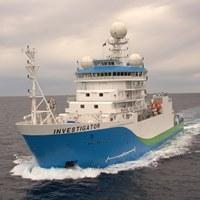
One Ten East Logs from the IIOE-2 voyage aboard RV Investigator will be posted on the WAMSI website during the month long voyage.
Another wonderful day had aboard RV Investigator with stunning calm conditions across the day and an amazing sunset.
– Captain Micheline Jenner
Log from One Ten East
The RV Investigator is currently undertaking oceanographic research along the 110°E meridian off Western Australia as part of the second International Indian Ocean Expedition. The voyage is led by Professor Lynnath Beckley of Murdoch University and the research is supported by a grant of sea time on RV Investigator from the CSIRO Marine National Facility.
|
Date: May 29, 2019 |
Time: 1200 AWST |
|
Latitude: 21.5°S |
Longitude: 110°E |
|
Wind direction: SE |
Wind speed: 10 knots |
|
Swell direction: S 1 m |
Depth: 5070 m |
|
Air temperature: 25°C |
Sea temperature: 25°C |
|
Notes: Beautiful sunny weather, warm seas and lots of tropical flying fish. |
|
Dilution Experiments
By Michael Landry
Phytoplankton can go through one or two generations (cell divisions) per day and are often eaten almost as fast as they divide, by protozoan grazers.
Because the size ranges of phytoplankton and microzooplankton broadly overlap, they cannot be mechanically separated from one another to determine these two different rates.
We do, however, have a technique for this, which involves dilution of the grazing impact. This entails changing the encounter frequency of predators and prey using filtered water with the same chemistry, from the same depth.
We create two conditions–one with natural concentrations of predators and prey and the other in which the grazing has been slowed by about 2/3rds. From the differences in the measured rates of increase of phytoplankton of the two treatments, we can solve the equations for the two unknown rates.
We run our experiments in a seawater-cooled, shipboard incubator system that has 6 light levels simulating the conditions of underwater light at the six depths where we collected our samples from the CTD.
The change in phytoplankton concentration in each bottle is measured by chlorophyll and by flow cytometry analyses of dominant populations.
After a lot of filtering, analyses and calculations, we will have a pretty good idea of how much of phytoplankton productivity is consumed by microzooplankton each day, how that varies with depth in the euphotic zone, and if there are significant differences among the stations or regions that we are sampling along the 110°East line.
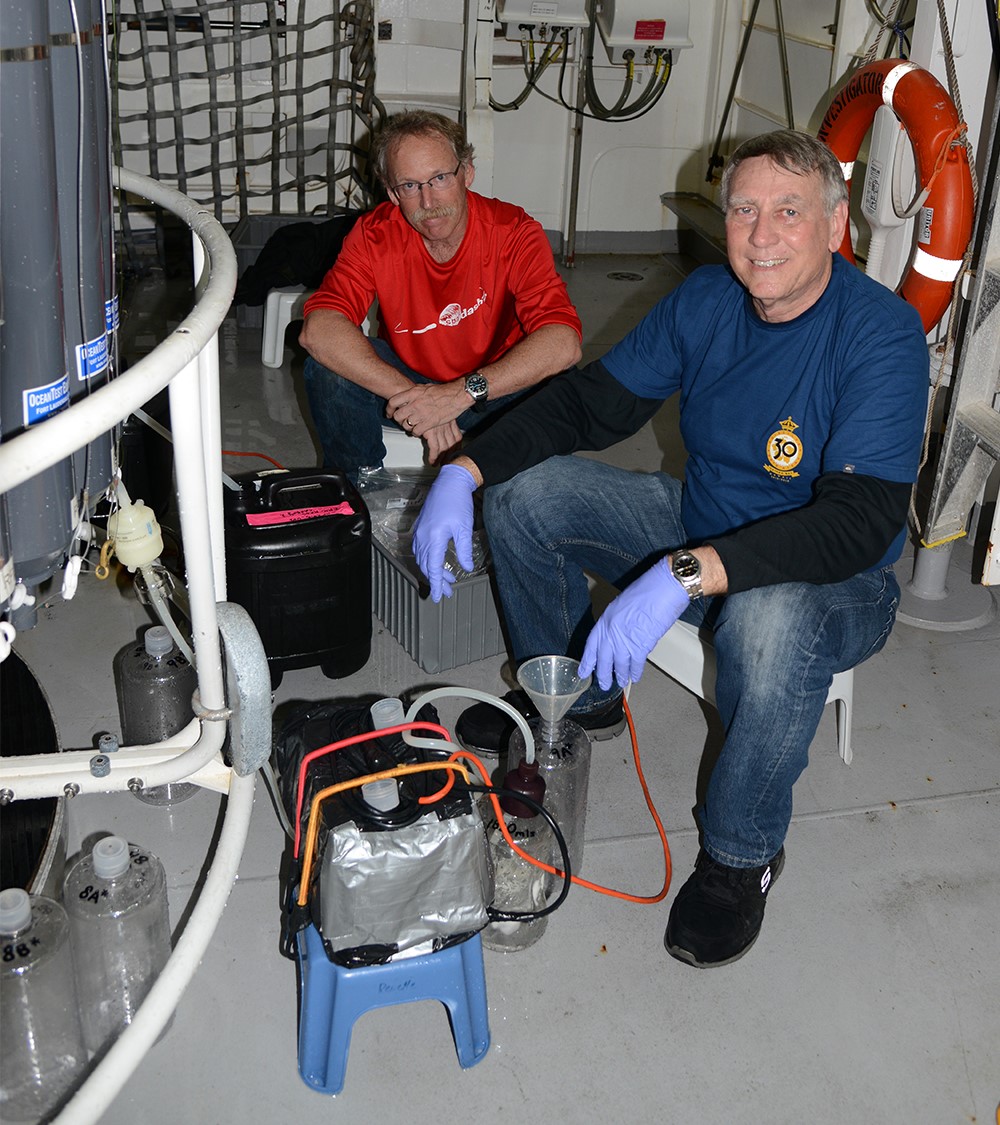 |
|
Prof Michael Landry (Scripps Institution of Oceanography, USA) and Prof Raleigh Hood (University of Maryland Center for Environmental Science) filtering water from the CTD in preparation for Prof Landry’s world-renowned dilution experiments, which are conducted on the aft deck of RV Investigator. Photo: Micheline Jenner AM. |
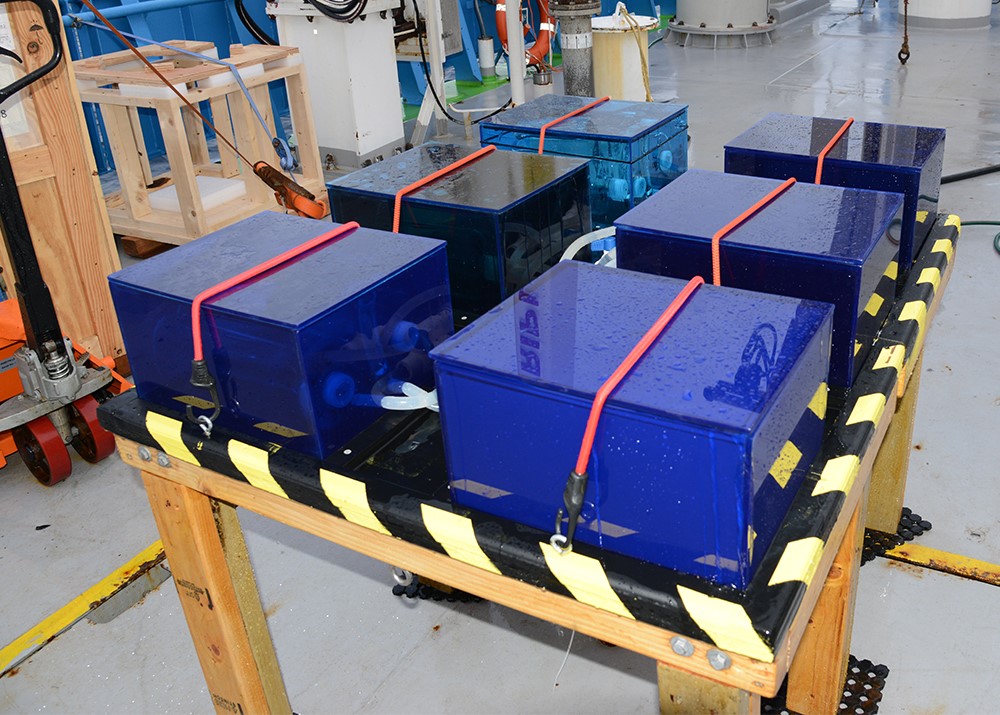 |
|
Simulating different light levels experienced at six different depths in the ocean, these seawater-cooled incubation tanks allow the calculation of phytoplankton growth and microzooplankton grazing rates. Photo: Micheline Jenner AM. |
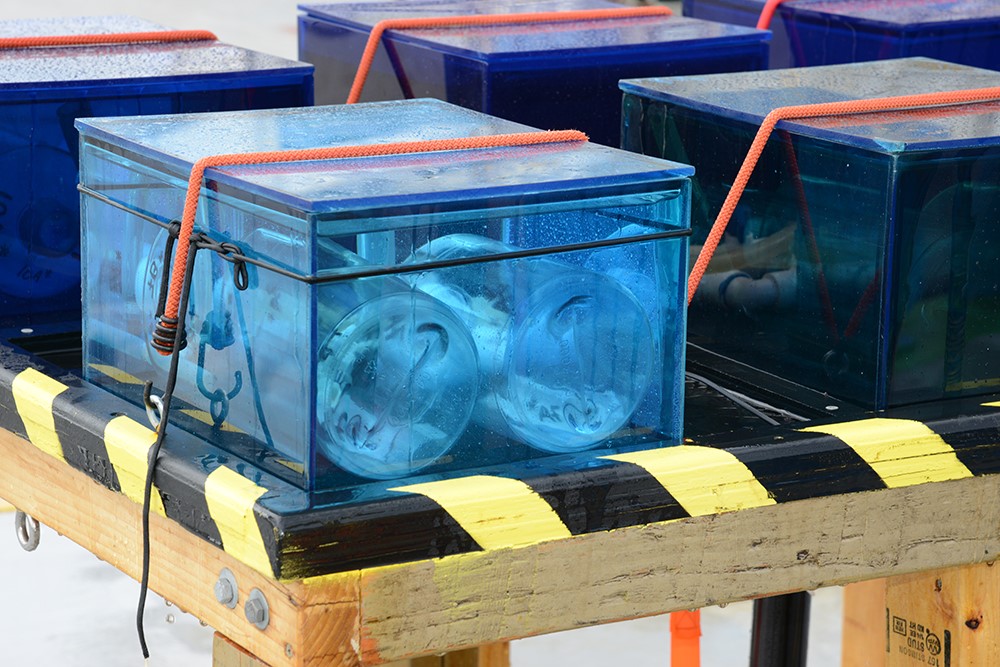 |
|
Each incubation box contains two bottles, one with the natural conditions of predators and prey and the other where the grazing conditions have been reduced or diluted. Photo: Micheline Jenner AM. |
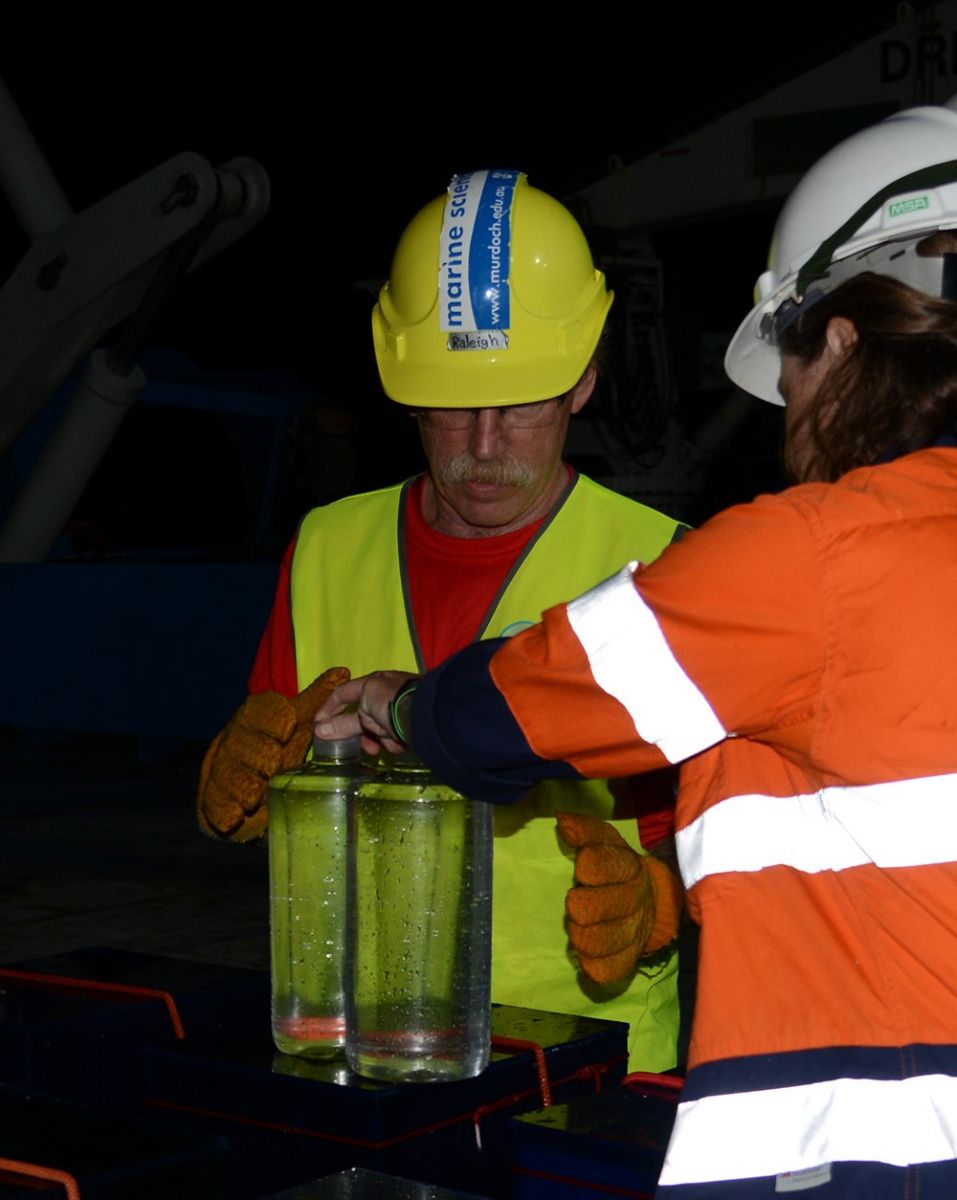 |
|
Prof Raleigh Hood (University of Maryland Center for Environmental Science) and Claire Davies (IMOS/CSIRO) tending to the dilution experiments on the aft deck of the RV Investigator. Here they are removing the bottles that have incubated for 24 hours. Photo: Micheline Jenner AM. |
Be sure to follow the daily posts of our One Ten East Logs from the IN2019_V03 aboard RV Investigator at https://iioe-2.incois.gov.in and www.wamsi.org.au .

